7 Best Vastus Lateralis Exercises (with Pictures!)
Regardless of training goals or athletic discipline, the muscles of the legs are considered to be one of the most important parts of the body to grow.
One vital portion of said muscles is the vastus lateralis - a muscle located on the outer section of the thigh, of which contributes greatly to stabilization and execution of movement in relation to the knee joint.
In order to train the vastus lateralis, resistance exercises targeting the greater quadriceps femoris will be needed.
While movements like split squats and lunges are a good start, more advanced exercisers may wish to pick exercises of greater specificity like the leg extension and narrow stance squat.
What is the Vastus Lateralis?
Otherwise known as the “quad sweep” by bodybuilders; the vastus lateralis is one portion of the four-headed quadriceps femoris muscle atop the thigh.
Due to its position and comparative size, the vastus lateralis is considered to be one of the strongest and most aesthetically-important muscles in the lower body.

Unfortunately, it isn’t quite possible to entirely isolate the vastus lateralis, as the entire quadriceps functions as a single unit.
Instead, it is possible to perform exercises in such a way that the vastus lateralis is emphasized, allowing for greater volume to be placed therein.
Function as a Muscle
The vastus lateralis is the strongest part of the quadriceps muscle group, and is responsible for extension of the knee joint alongside other muscles like the vastus intermedius, medialis and the rectus femoris.
Benefits of Training the Vastus Lateralis
Training the vastus lateralis can offer a host of benefits to the lifter, especially if they are a bodybuilder or athlete.
First is the fact that the vastus lateralis contributes the most to the size of the upper legs - especially when viewed from the front, where it is responsible for the width and lateral curvature of the quadriceps muscles.
This is so vital in the sport of bodybuilding that it has earned the nickname of “quad sweep”, as it forms a sweeping curve when developed to great size.
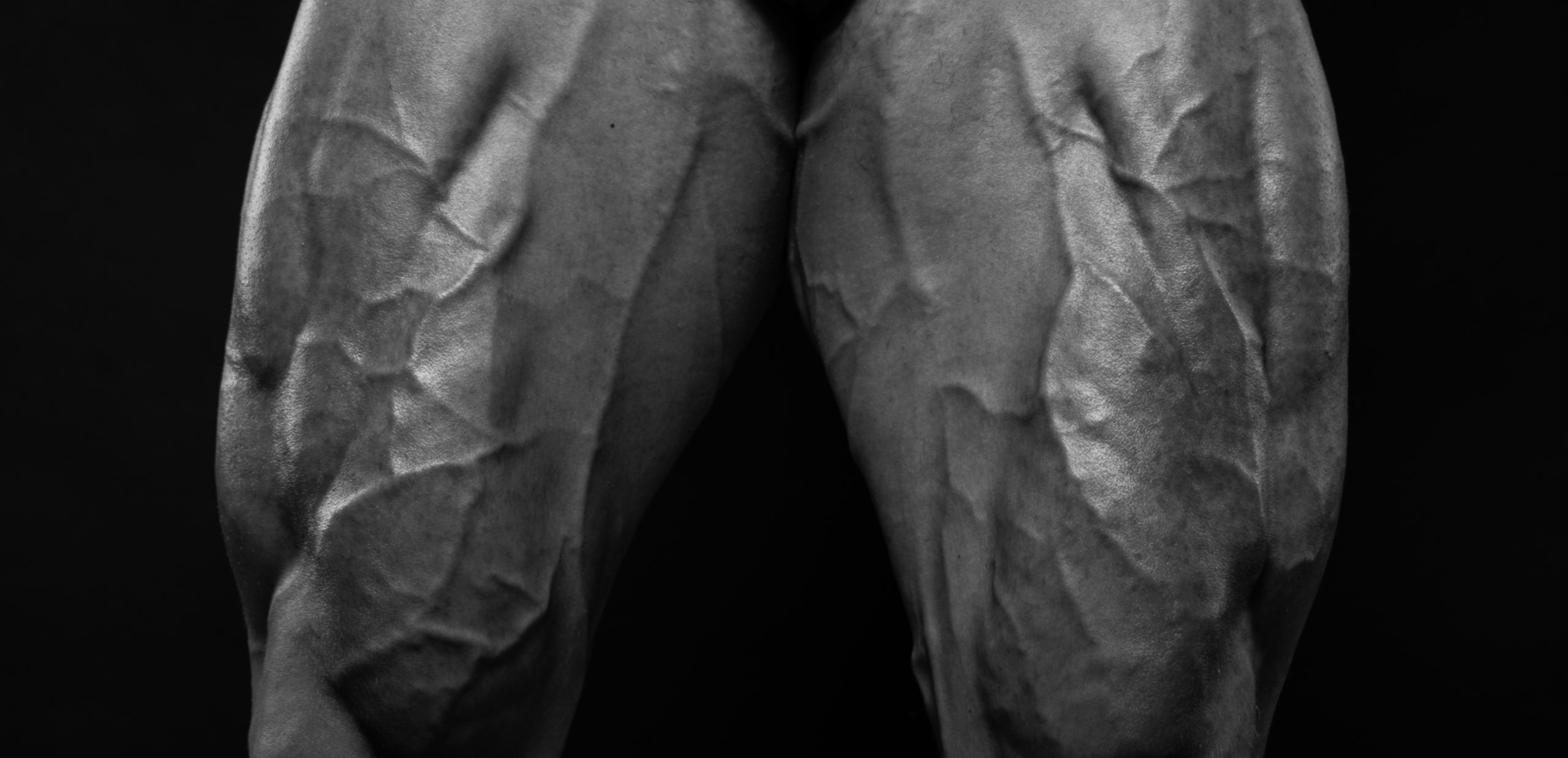
In addition, the vastus lateralis’ function as the largest and strongest portion of the quadriceps means that it is also the most important muscle to strengthen for maintaining knee function.
Not only will it allow for a stronger and more stable knee extension mechanic, but training the vastus lateralis will also reduce risk of future injury in relation to the knee as a whole.
How to Select the Right Vastus Lateralis Exercise for You
It goes without saying that many exercises differ in terms of difficulty, mechanics and actual equipment required.
Lifters wishing to train their vastus lateralis should first assess their own familiarity with resistance training mechanics, as well as their reason for training the vastus lateralis.
Novice lifters and those seeking greater muscle mass are better served with lower-complexity but high volume exercises like the step up, whereas more advanced lifters seeking strength development will see greater results from the front squat and similarly heavy movements.
Vastus Lateralis Exercises
1. Lunges
Lunges are a multi-joint compound exercise known for being accessible to lifters of all levels and goals.

When utilized as a vastus lateralis exercise, their single-leg nature and greater focus on the quadriceps makes them ideal as a secondary compound movement, or as an equipment-free alternative to more specialized vastus lateralis movements.
Muscles Worked by Lunges
Lunges will work the muscles of the quadriceps, the hamstrings, the glutes and the calves to a moderate level of intensity.
Benefits as a Vastus Lateralis Exercise
Lunges are highly dynamic, and feature a low barrier of entry from both at technical and equipment standpoint. They may be performed equipment-free by novice exercisers in their own home, or loaded with dumbbells and other sorts of resistance equipment for better results.
In addition, lunges are excellent for placing greater emphasis on the vastus lateralis while also training the rest of the lower body, saving the lifter time and energy.
How-to:
Standing upright, the lifter will take an exaggerated step forward, bending at the knee and ensuring the motion is slow and controlled. The back leg will also bend until it is parallel with the floor, as if kneeling with only one leg.
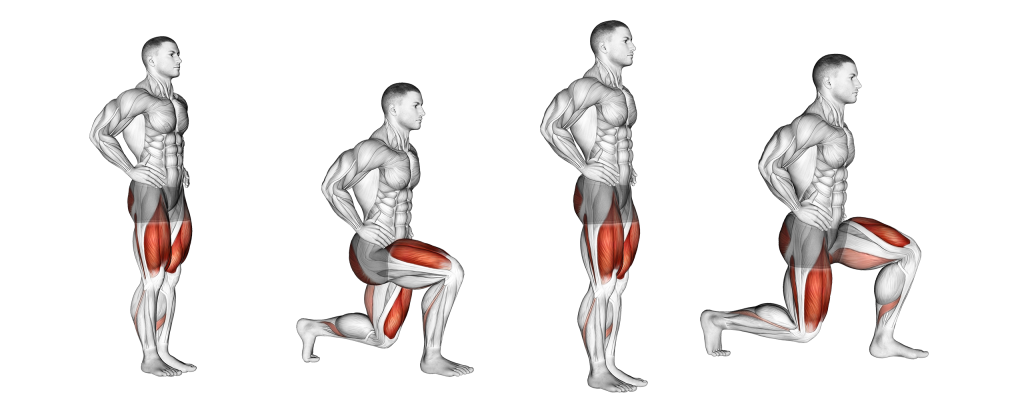
Once the back leg is parallel to the floor, the lifter will extend their knees once more and return to a standing position, thereby completing the repetition.
2. Side or Lateral Step Ups
For a more aerobic take on vastus lateralis exercises, lifters may perform side step ups.

Side step ups are a laterally-moving variation of conventional step ups, and are a multi-joint compound exercise primarily performed as part of a plyometric or athletic workout regime.
Muscles Worked by Side or Lateral Step Ups
Side step ups work the quadriceps, calves, hamstrings and glutes, with a particular focus on the muscles that contribute to lateral hip movement.
Benefits as a Vastus Lateralis Exercise
Side step ups have the benefit of being highly dynamic while also building up muscle in a way that is more associated with classical resistance exercises. This means that the exercise can burn calories, induce cardiovascular improvements and produce a host of other exercises related to high tempo exercise.
Furthermore, it allows for training of the vastus lateralis in a manner that is more akin to athletic activities, both in terms of cadence as well as in pure volume of repetitions.
How-to:
Standing upright with a block to their side, the lifter will raise their knee and take an exaggerated step atop the block, as if climbing a flight of stairs.
Once the leg is straightened atop the block, they will drop back to the floor, completing the repetition.
This exercise should be performed with both sides of the body, as it is primarily unilateral and may result in muscular imbalances.
3. Inward-Facing Leg Extension Machine
The classic leg extension is already known to be an excellent quadriceps exercise - but modifying the exercise by pointing the toes inwards can further focus on the vastus lateralis.

The inward-facing leg extension exercise is a single-joint isolation movement performed with the use of a machine.
Unlike conventional leg extensions, this particular variation involves the lifter pointing their toes inwards for greater emphasis on the outer section of the quads.
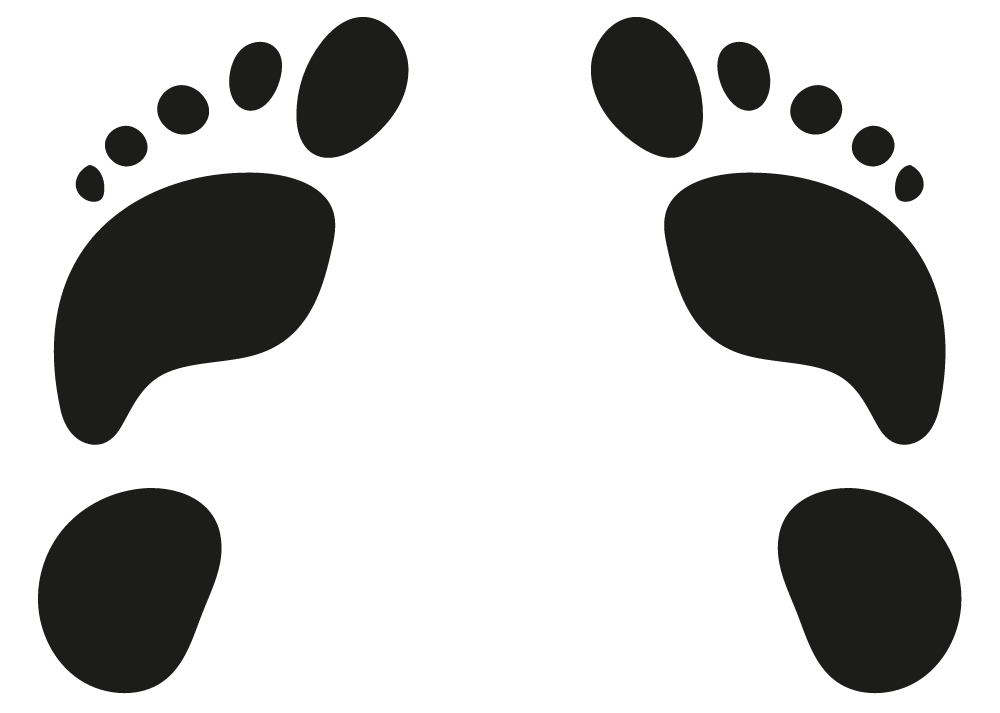
Due to the inherent risk of knee injury when performing leg extensions in this manner, it is best to use as little weight as possible, and to ensure that the lifter has an already-established understanding of leg extension technique.
Muscles Worked by Inward-Facing Leg Extension Machine
The leg extension (regardless of variation) is an isolation exercise, and solely trains the quadriceps femoris.
Benefits as a Vastus Lateralis Exercise
The inward-facing leg extension is one of the few quadriceps isolation exercises available, and excellent for bodybuilders and other types of lifters in need of significant quadriceps volume without fatiguing the rest of the lower body.
In addition, due to its machine-based nature, the leg extension is particularly effective at recruiting the quadriceps in isolation. Very little isometric contraction of other muscle groups is shown to take place, diverting more energy and focus to the quads.
How-to:
Sitting within the leg extension machine, the lifter will hook their ankles beneath the pad under them as they grip the handles for support.
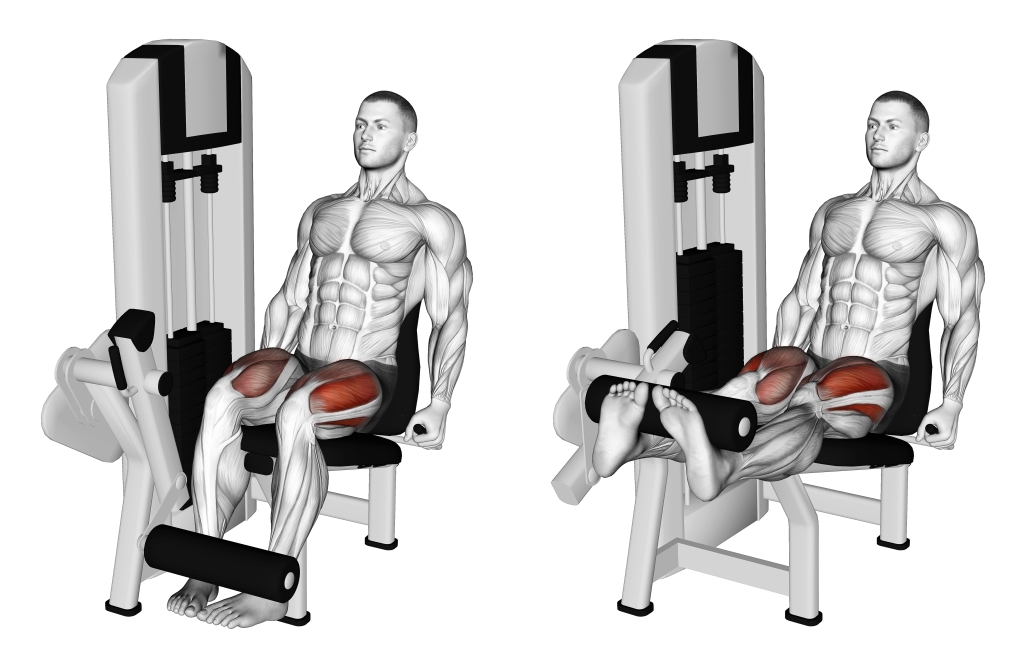
Raising the shins upwards and squeezing the quadriceps, the lifter will keep their toes pointed slightly inwards before stopping just shy of full knee extension.
The repetition is considered complete once the legs have returned to their original position beneath the seat.
4. Narrow Stance Squats
Also known as close stance squats, narrow stance squats are an advanced variation of conventional squats that place a greater emphasis on portions of the quadriceps due to the heels being planted closer together.
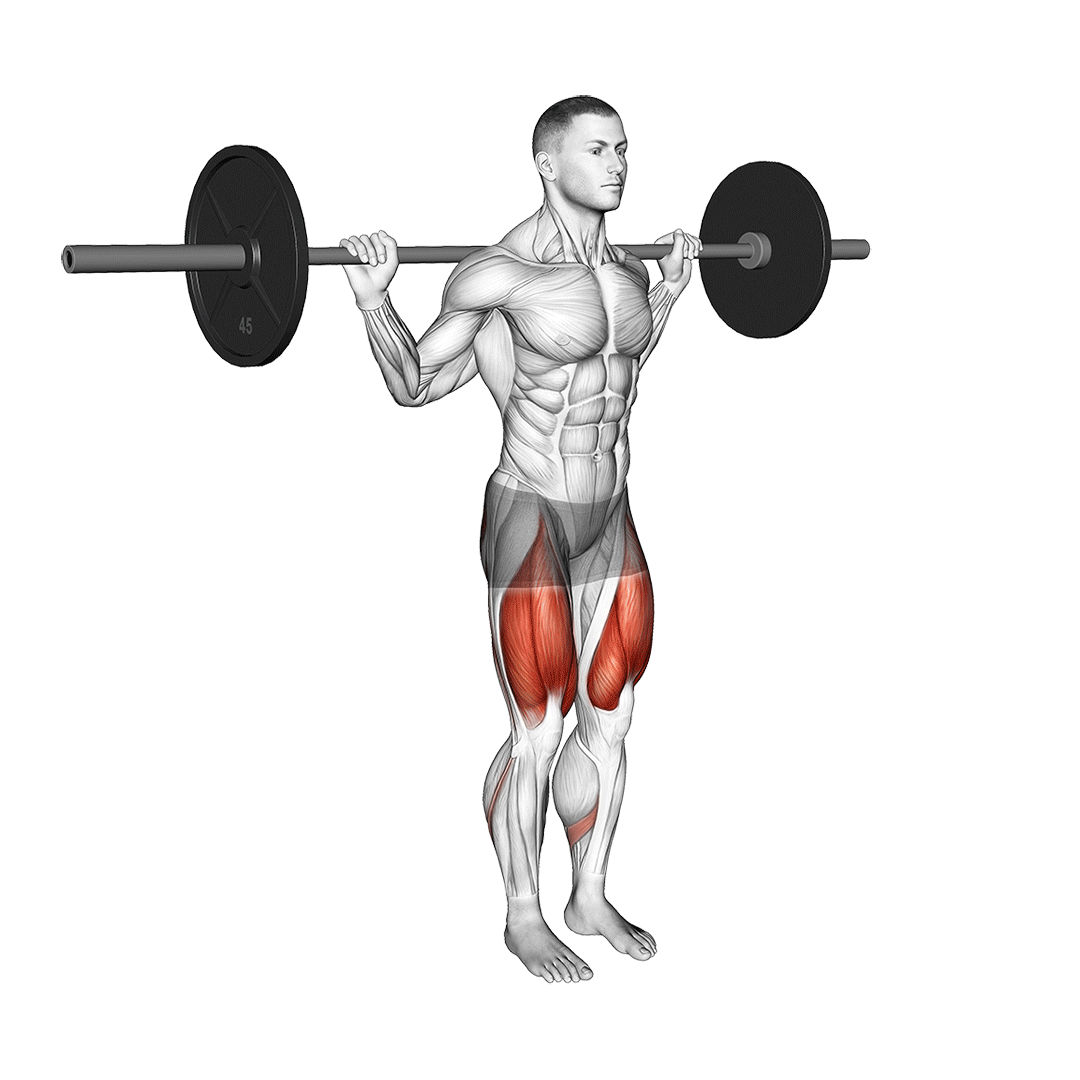
Narrow stance squats are somewhat more likely to result in injury and require greater knee and hip mobility to perform, and as such should be reserved for lifters with at least an intermediate familiarity with back squat execution.
Muscles Worked by Narrow Stance Squats
Like conventional back squats, narrow stance squats work the glutes, hamstrings, lower back and quadriceps to great intensity.
Benefits as a Vastus Lateralis Exercise
Narrow stance squats allow for significantly more loading than most other exercises targeting the vastus lateralis, and are all-around excellent for lower body muscular development as a whole.
Furthermore, they are one of the most ideal exercises (alongside front squats) for powerlifters and strength athletes wishing to improve vastus lateralis strength and power.
How-to:
Standing with the feet shoulder-width apart or narrower, the lifter will bend at the hips and knees as they contract their core and hinge the pelvis backwards.
The chest should remain upright and the hips rotating outwards as they do so, with the feet facing the same direction as the knees, rather than outwards as is the case with conventional stance squats.
Once the hips are parallel to the knees in depth, the lifter will push through their heels and extend their knees once more, returning to a standing position and thereby completing the repetition.
5. Front Squats
As a safer and lighter alternative to narrow stance squats, front squats also feature a similar emphasis on the quadriceps femoris.
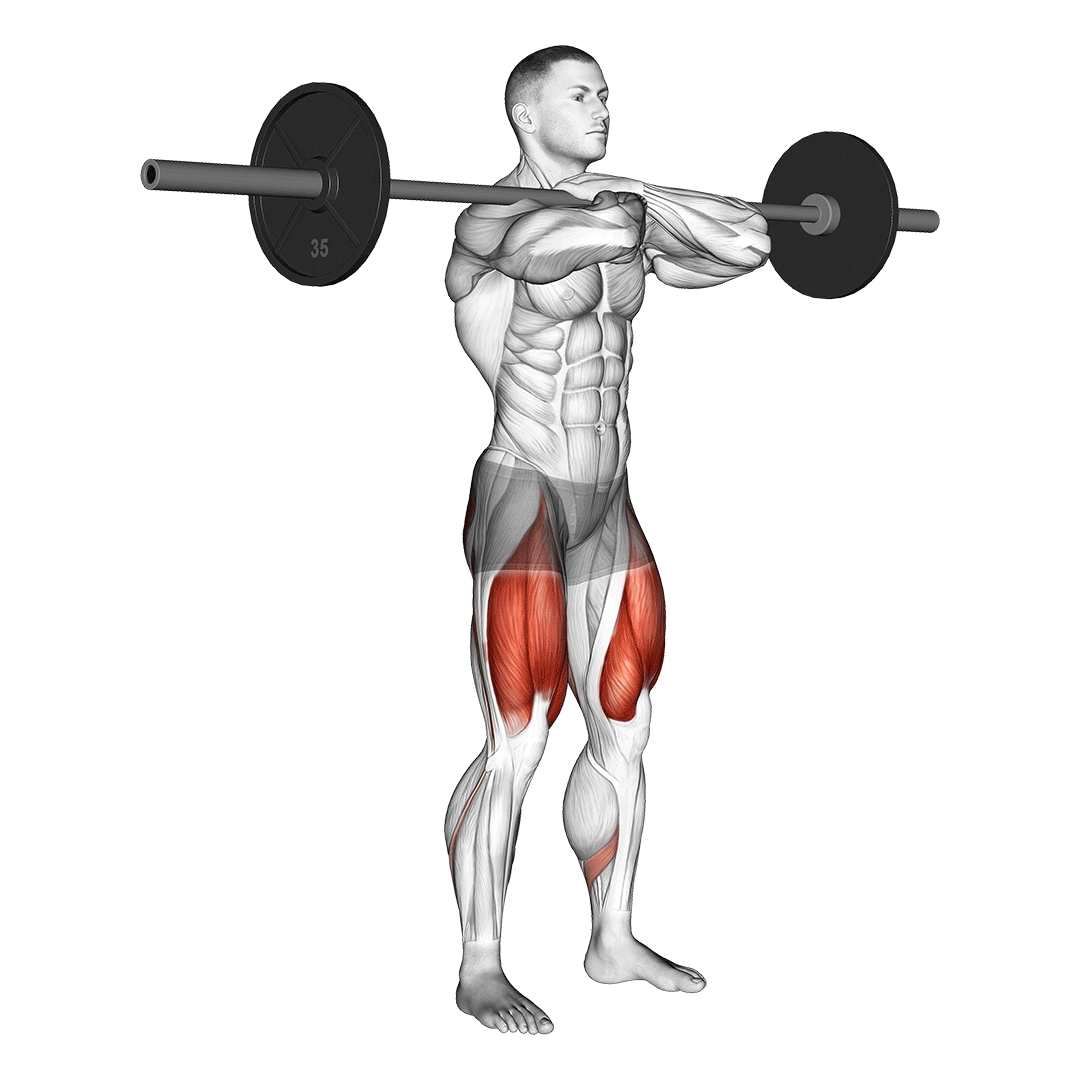
Front squats are a multi-joint compound exercise performed with a barbell placed atop the chest shelf so as to create a more vertical angle of resistance and greater emphasis on the anterior section of the lower body.
Muscles Worked by Front Squats
Front squats work the quadriceps, hamstrings, and glutes - although muscles like the deltoids, core and erector spinae will also be taxed intensely despite the isometric nature of their contraction.
Benefits as a Vastus Lateralis Exercise
In truth, the front squat placed greater emphasis on the vastus medialis than it does the vastus lateralis.
However, in comparison to other heavy lower body compound exercises, the front squat nonetheless excels at training the vastus lateralis, and is an excellent choice for powerlifters and other strength-based athletes seeking significant loading.
In addition, front squats are particularly useful for training the quadriceps in a manner that does not require a significant amount of weight, as the position of the barbell atop the torso produces a far more disadvantageous position.
How-to:
Standing upright with the feet set shoulder-width apart, the lifter will place a loaded barbell atop the “shelf” produced by their anterior deltoids, chest and collarbones as they secure it with their hands beneath the bar. The elbows should remain pointing forward as they do so.
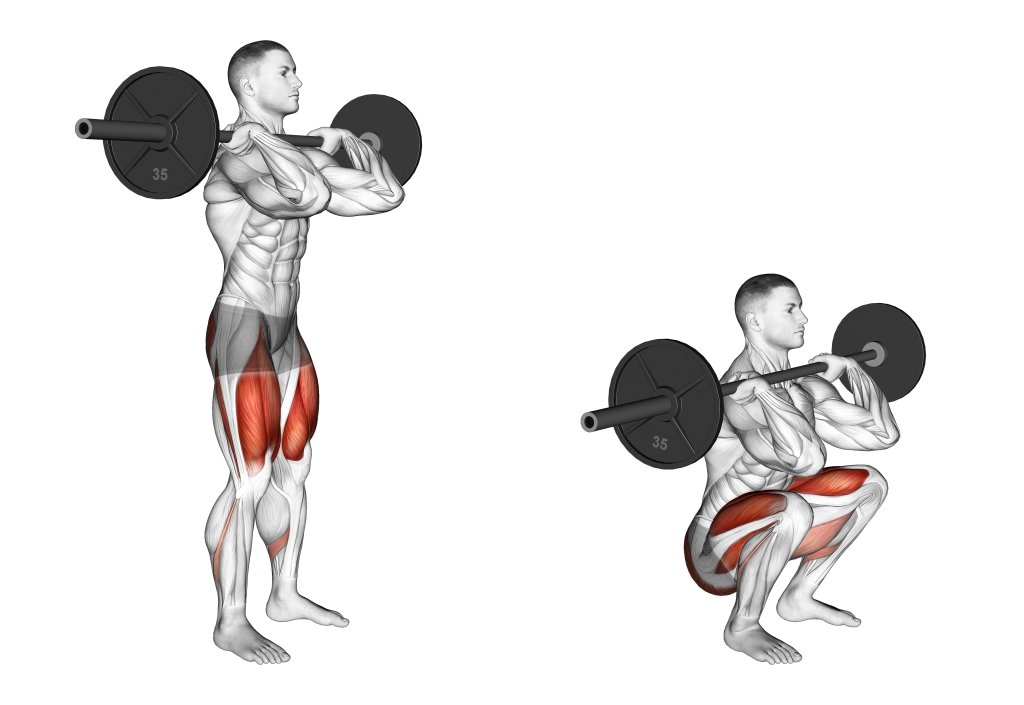
Bending at the hips and knees, the lifter will lower themselves to at least parallel depth before rising once again, thereby completing the repetition.
6. Bulgarian Split Squats
Bulgarian split squats are a type of split squat where one leg remains elevated behind the body throughout the repetition, causing greater recruitment of the quadriceps and arguably greater usage of the vastus lateralis in an isometric capacity.
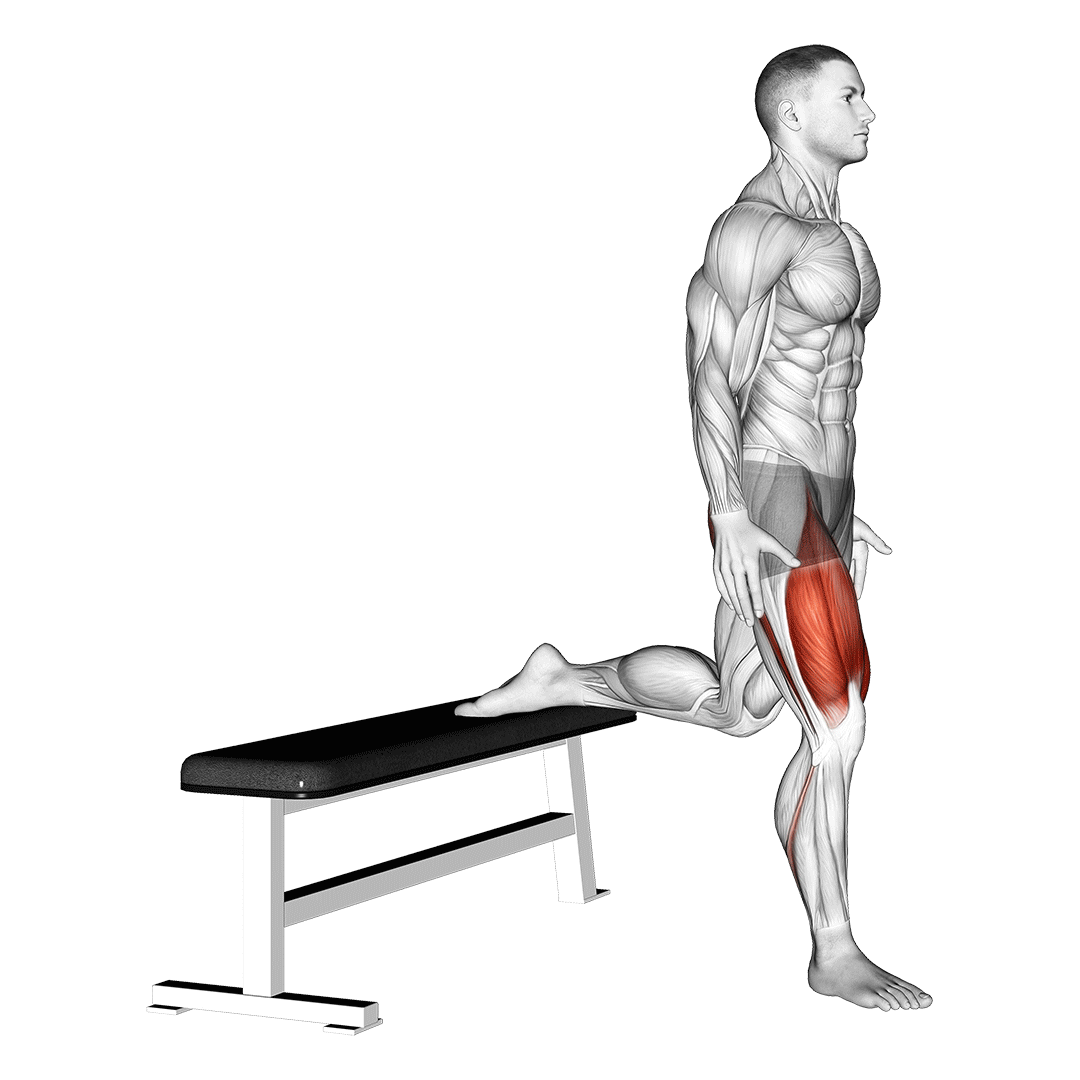
Bulgarian split squats are a multi-joint compound exercise primarily performed by bodybuilders and athletes to strengthen their glutes and quadriceps, and may be performed with or without weight, depending on the goal.
Muscles Worked by Bulgarian Split Squats
Bulgarian split squats primarily work the gluteal muscle group and the quadriceps femoris, but also incidentally recruit the muscles of the calves and hamstrings as well.
Benefits as a Vastus Lateralis Exercise
Bulgarian split squats are excellent for building up quadriceps mass and strength in a unilateral manner, and are particularly useful for lifters who wish to correct a muscular imbalance without foregoing the benefits of lower body compound exercises.
In addition, they are highly accessible and may be performed by even novice lifters with no equipment in the comfort of their own homes.
How-to:
Placing one foot atop an elevated object behind them, the lifter will bend forward at the knee as they lower themselves towards the floor.

Once the front-facing leg is parallel to the floor, they will push through their heel and rise back to their original one-legged standing position, thereby completing the repetition.
7. Sissy Squats
Primarily performed as a bodyweight exercise, sissy squats are a unique take on the conventional squat where the quadriceps are utilized to a far greater degree due to the angle of the torso in relation to the knees.
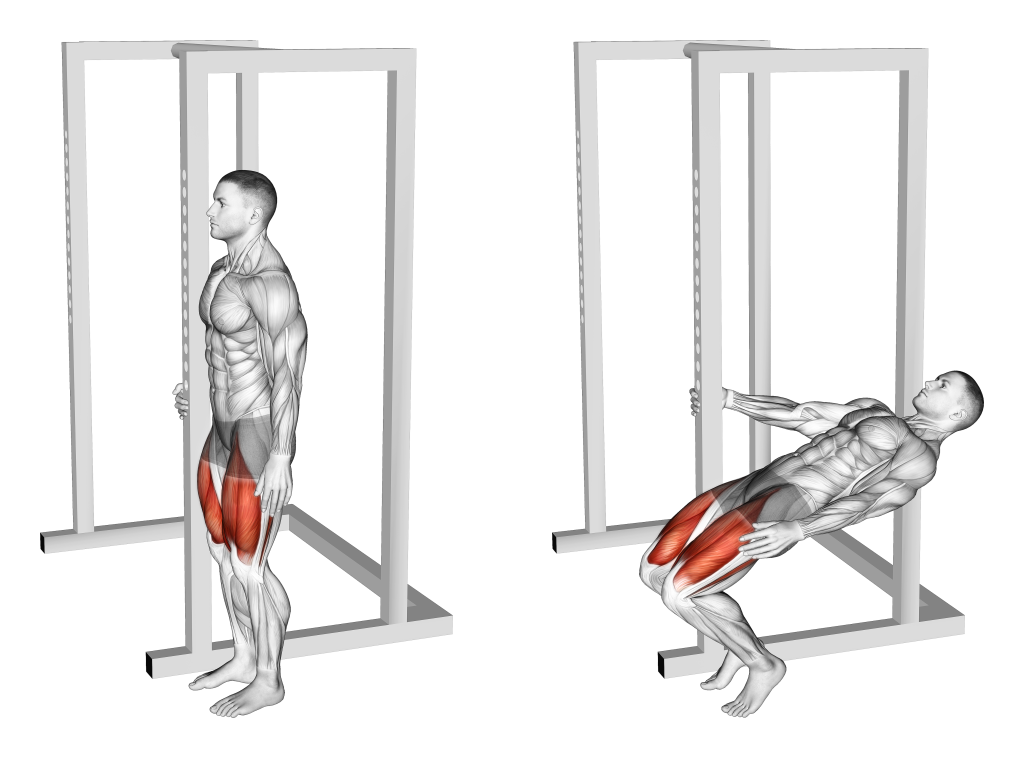
Sissy squats are a multi-joint compound exercise that train not only the muscular strength of the lower body, but also more technical skills like innate balance and ankle mobility.
Muscles Worked by Sissy Squats
Sissy squats work the calves, quadriceps, core, glutes and hamstrings to great intensity - but will work the muscles of the quadriceps and calves to the comparatively greatest extent.
Benefits as a Vastus Lateralis Exercise
Sissy squats are unique in the way that they have a relatively low barrier of entry but are difficult to master (or perform with weight), as they involve the lifter bending backwards as they squat downwards with the feet arched.
In addition, sissy squats are excellent for emphasizing the vastus lateralis in cases where bodyweight lunges and split squats aren’t suitable.
How-to:
If needed, this exercise may be performed with the lifter holding onto an object for balance.
Standing upright with the feet slightly wider than hip-width apart, the lifter will bend forward at the knees and lean their torso backwards, rolling onto the balls of their feet as they do so.
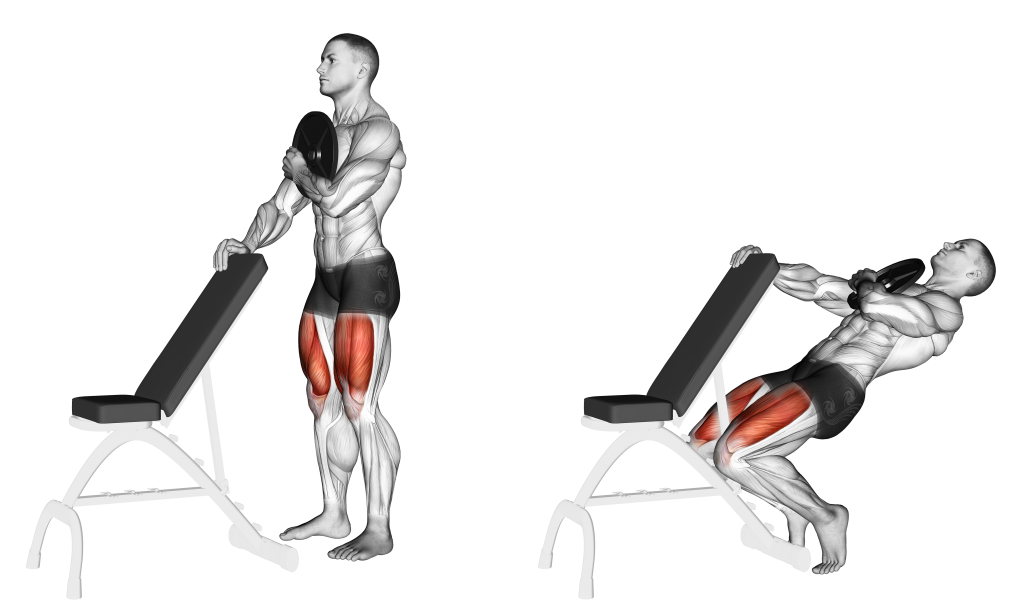
The lifter will continue this movement until they have reached the limits of their balance and mobility, before reversing it and returning to a standing position.
If this exercise is hard to picture, think of the classic knee-first slide that many rockstars do on stage - or of Neo from The Matrix.
A Reminder
Keep in mind that - regardless of the mechanics or angle - your vastus lateralis will be trained alongside the rest of the quadriceps.
Recruiting the entire muscle group is largely unavoidable, and if you are seeking a vastus lateralis exercise due to a muscular imbalance or similar condition, it is better to seek out the advice of a medical professional.
Otherwise, ensure that whatever exercise you have picked is performed with as perfect form as possible, and that it meshes correctly with other exercises in your training program.
References
1. Kang JI, Park JS, Choi H, Jeong DK, Kwon HM, Moon YJ. A study on muscle activity and ratio of the knee extensor depending on the types of squat exercise. J Phys Ther Sci. 2017 Jan;29(1):43-47. doi: 10.1589/jpts.29.43. Epub 2017 Jan 30. PMID: 28210036; PMCID: PMC5300802.
